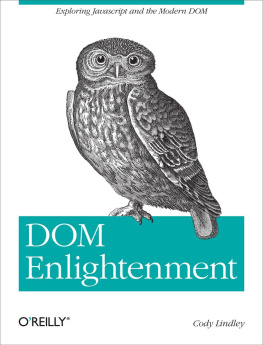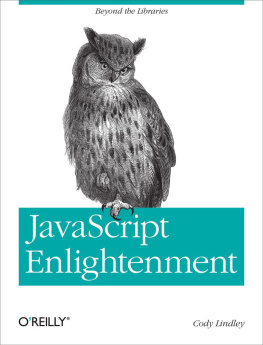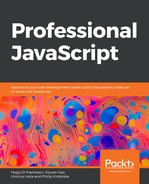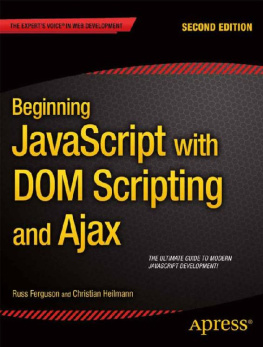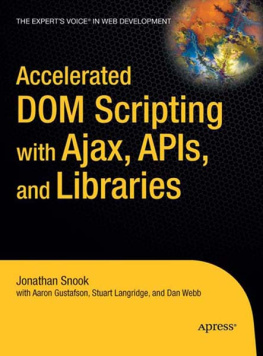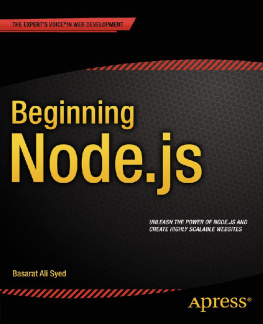DOM Enlightenment
Cody Lindley
Beijing Cambridge Farnham Kln Sebastopol Tokyo
Special Upgrade Offer
If you purchased this ebook directly from oreilly.com, you have the following benefits:
DRM-free ebooksuse your ebooks across devices without restrictions or limitations
Multiple formatsuse on your laptop, tablet, or phone
Lifetime access, with free updates
Dropbox syncingyour files, anywhere
If you purchased this ebook from another retailer, you can upgrade your ebook to take advantage of all these benefits for just $4.99. to access your ebook upgrade.
Please note that upgrade offers are not available from sample content.
Foreword
Jeremy Keith, founder and technical director of clearleft.com , and author of DOM Scripting: Web Design with JavaScript and the Document Object Model
I make websites. Sometimes I make music. Over the years, Ive noticed an interesting pattern of behavior from some musiciansoften self-taughtwho think of themselves as creative types: they display an aversion to learning any music theory. The logic, they say, is that knowing the theory behind music will somehow constrain their creative abilities. Ive never understood that logic (and I secretly believe that its a retroactive excuse for a lack of discipline). To my mind, I just dont see how any kind of knowledge or enlightenment could be a bad thing.
Alas, I have seen the same kind of logic at work in the world of web design. There are designers who not only dont know how to write markup and CSS, they actively refuse to learn. Again, they cite the fear of somehow being constrained by this knowledge (and again, I believe thats a self-justifying excuse).
In the world of front-end development, that attitude is fortunately far less prevalent. Most web devs understand that theres always more to learn. But even amongst developers who have an encyclopediac knowledge of HTML and CSS, there is often a knowledge gap when it comes to the Document Object Model. Thats understandable. You dont need to understand the inner workings of the DOM if youre using a library like jQuery. The whole point of JavaScript libraries is to abstract away the browsers internal API and provide a different, better API instead.
Nonetheless, I think that many front-end devs have a feeling that they should know whats going on under the hood. Thats the natural reaction of a good geek when presented with a system theyre expected to work with. Now, thanks to DOM Enlightenment , they can scratch that natural itch.
Douglas Crockford gave us a map to understand the inner workings of the JavaScript language in his book JavaScript: The Good Parts . Now Cody Lindley has given us the corresponding map for the Document Object Model. Armed with this map, youll gain the knowledge required to navigate the passageways and tunnels of the DOM.
You might not end up using this knowledge in every project. You might decide to use a library like jQuery instead. But now it will be your decision. Instead of having to use a library because thats all that you know, you can choose if and when to use a library. Thats a very empowering feeling. Thats what knowledge provides. That is true enlightenment.
Preface
This book is not an exhaustive reference on DOM scripting or JavaScript. It may, however, be the most exhaustive book written about the HTML DOM without the use of a library/framework. The lack of authorship around this topic is not without good reason. Most technical authors are not willing to wrangle this topic because of the differences that exist among legacy browsers and their implementations of the DOM specifications (or lack thereof).
For the purpose of this book (i.e., grokking the concepts), Im going to sidestep the browser API mess and dying browser discrepancies in an effort to expose the modern DOM. Thats right, Im going to sidestep the ugliness in an effort to focus on the here and now. After all, we have solutions such as jQuery to deal with all that browser ugliness, and you should definitely be leveraging something like jQuery when dealing with deprecated browsers.
While I am not promoting the idea of only going native when it comes to DOM scripting, I did write this book in part so that developers may realize that DOM libraries are not always required when scripting the DOM. I also wrote for the lucky few who get to write JavaScript code for a single environment (i.e., one browser, mobile browsers, or HTML+CSS+JavaScript-to-native via something like PhoneGap). What you learn in this book may just make a DOM library unnecessary in ideal situationssay, for example, some light DOM scripting for deployment on a WebKit mobile browser only.
Who Should Read This Book
As I authored this book, I specifically had two types of developers in mind. I assume both types already have an intermediate to advanced knowledge of JavaScript, HTML, and CSS. The first developer is someone who has a good handle on JavaScript or jQuery, but has really never taken the time to understand the purpose and value of a library like jQuery (the reason for its rhyme, if you will). Equipped with the knowledge from this book, that developer should fully be able to understand the value provided by jQuery for scripting the DOM. And not just the value, but how jQuery abstracts the DOM and where and why jQuery is filling the gaps. The second type of developer is an engineer who is tasked with scripting HTML documents that will only run in modern browsers or that will get ported to native code for multiple OSes and device distributions (e.g., PhoneGap) and needs to avoid the overhead (i.e., size or size versus use) of a library.
Technical Intentions, Allowances, and Limitations
Before reading this book, make sure you understand the following technical intentions, allowances, and limitations:
The content and code contained in this book was written with modern browsers (IE 9+, Firefox latest, Chrome latest, Safari latest, Opera latest) in mind. It was my goal to only include concepts and code that are native to modern browsers. If I venture outside of this goal, I will bring this fact to the readers attention. Ive generally steered away from including anything in this book that is browser-specific or implemented in a minority of the modern browsers.
Im not attempting in this book to dogmatically focus on a specific DOM, CSS, or HTML specification. This would be too large an undertaking (with little value, in my opinion) given the number of specifications at work and the history/status of browsers correctly implementing the specifications. I have leveraged and balanced in a very subjective manner the content from several specifications: Document Object Model (DOM) Level 3 Core Specification, DOM4, Document Object Model HTML, Element Traversal Specification, Selectors API Level 2, DOM Parsing and Serialization, HTML 5 Reference, HTML 5A vocabulary and associated APIs for HTML and XHTML, HTML Living Standard, HTML: The Living Standard, Developer version, and DOM Living Standard. The content for this book is based more on where the community is and less on dogmatically attempting to express a specific spec.
Im covering several handpicked topics that are not DOM-specific. Ive included these topics in this book to help the reader build a proper understanding of the DOM in relationship to CSS and JavaScript.
Ive purposely left out any details pertaining to XML or XHTML.

